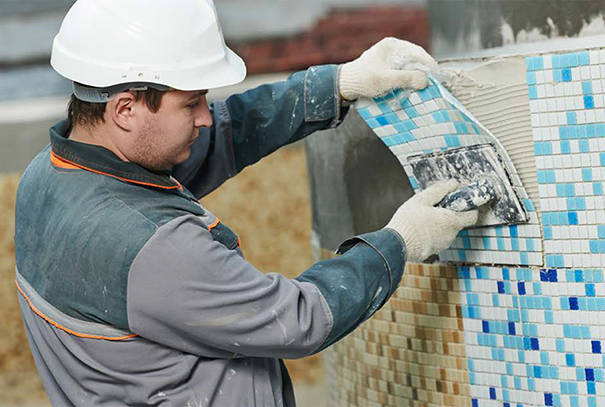
Losses to refurbishment contracts are complex; they encompass damage to the works, the damage to the existing structure and the possibility of considerable consequential losses in multiuse buildings. Fit- out contractors must therefore make sure that the balance of risk and reward is fairly attributed under the construction contract.
JCT Contractual position
In our experience, most refurbishment projects in the UK are undertaken using the JCT Design and Build form. Clause 6.7 governs responsibility for insurance of the works and Existing Structures, with Option C having been specifically created for contracts involving alterations or extensions to Existing Structures. Option C has two key requirements:
- C.1 – the Employer must maintain a policy in joint names of the Employer and Contractor, which covers the Existing Structures for any loss or damage due to any Specified Perils.
- C.2 – the Employer must maintain a policy in joint names of the Employer and Contractor for All Risks insurance covering the contract works
Although this arrangement may seem straightforward, the obligations set out in C.1 are not always achievable, for example in situations where the employer is a tenant it may not be possible to give a contractor the benefit of the Landlord’s Existing Structure’s insurance policy. In light of this, the JCT 2016 Design & Build contract allows replacement provisions through the ‘C1 Replacement Schedule’ giving parties the ability to adjust the requirements and replace them with bespoke provisions to achieve a fair balance of risk. It is the JCT’s view that the preparation of such replacement provisions must be assigned to insurance professionals.
Where the contractor and employer are unable to agree the template drafting of Option C, the contractor needs to seek alternative arrangements to manage or transfer the Existing Structure risk. The Existing Structure can either be treated as a third party risk through Option A or B and insured by a Third Party Liability policy, or first party risk and therefore insured as part of the Construction All Risks (CAR) through Option A.
Third Party Liability policy
The contractor can ring fence the Existing Structure risk by effecting a project specific Third Party Liability policy. This can be costly and contractors need to obtain quotes early in the tender process to ensure they have allowed adequate cost for the risk. Alternatively, contractors are able to rely on their annual Third Party liability policy but need to be aware that in doing so they risk an uplift in future insurance costs should they suffer a significant loss.
Another option is for the contractor to cap their liability through contract. This will require negotiation with the employer as once the liability cap is exhausted, the risk of loss or damage to the existing structure would transfer back to the employer. Contractors would rely on a Third Party Liability policy for their capped exposure, which should be set at a fair level to reflect the value of their works. The relevant disclosure should be made to the annual liability insurers that to ensure a fair presentation of risk is made. Contractors should also be aware that they are unable to cap their liability in respect of third party bodily injury, and this can be a significant exposure in a multiuse, operational existing structure.
Construction All Risks Existing Structure extension
Where the contractor assumes responsibility for the Existing Structure part of the works, and the value of the Existing Structure lower than the value of work to be undertaken, it may be possible for the fit- out contractor to rely on an extension to their Construction All Risks (CAR) policy. In this situation, JCT Option A will need to be selected. Typically, any existing structures extension under an annual CAR policy will obligate the Insured to notify the insurers of the works and the value of the Existing Structure and cover may be subject to surveys and additional premium or terms.
Risk management
To further aid the risk management process, fit-out contractors should also establish processes to ensure their supply chain are required to maintain the same levels of insurance as them, where possible. By going “back to back” with the supply chain, the fit out contractors will be reducing their risk profile, demonstrating this to insurers should achieve premium savings.
A suitable insurance solution will be determined by the unique demands of each contract. Contractors need to involve their insurance broker at an early stage of these complex arrangements to ensure an insurance solution is found and reflected in the contract drafting. Given the risks associated with large existing structures, fit-out contractors must find a fair balance of risk with the employer to ensure the commercial viability of a contract.
To learn more of the risks associated with fit out contractors, or have a question relating to construction insurance please contact:
The sole purpose of this article is to provide guidance on the issues covered. This article is not intended to give legal advice, and, accordingly, it should not be relied upon. It should not be regarded as a comprehensive statement of the law and/or market practice in this area. We make no claims as to the completeness or accuracy of the information contained herein or in the links, which were live at the date of publication. You should not act upon (or should refrain from acting upon) information in this publication without first seeking specific legal and/or specialist advice. Arthur J. Gallagher (UK) Limited accepts no liability for any inaccuracy, omission or mistake in this publication, nor will we be responsible for any loss, which may be suffered as a result of any person relying on the information contained herein.


